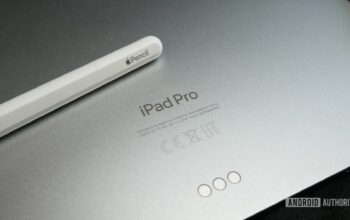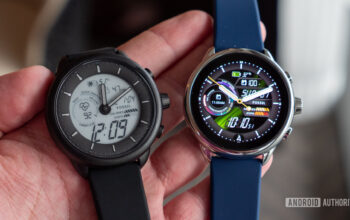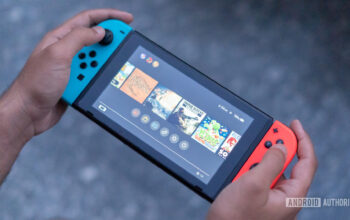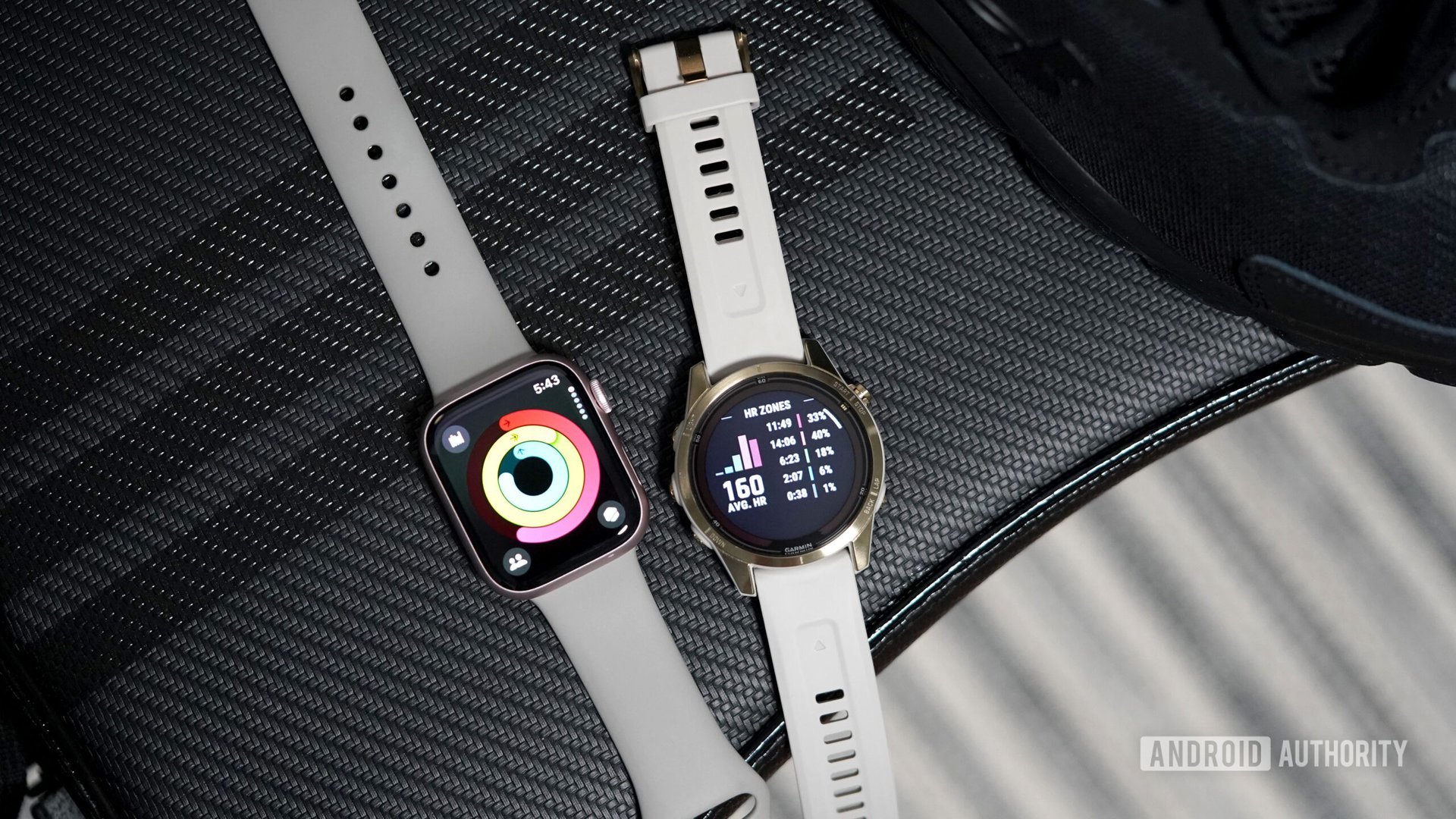
Kaitlyn Cimino / Android Authority
One perk of reviewing wearables is garnering insight into all the top brands available. That also means the ability to help friends and family choose the best smartwatch or fitness tracker to toss into their own carts. Historically, Garmin has been my go-to brand for athletes and big fitness enthusiasts. Apple’s watches I’ve primarily recommended to those who want an extension of their phones on their wrist. In the last few years, though, Apple has been moving in on Garmin’s territory and I see myself recommending the Apple Watch more and more instead of Garmin. Here’s why.
Both Apple and Garmin are after users’ hearts
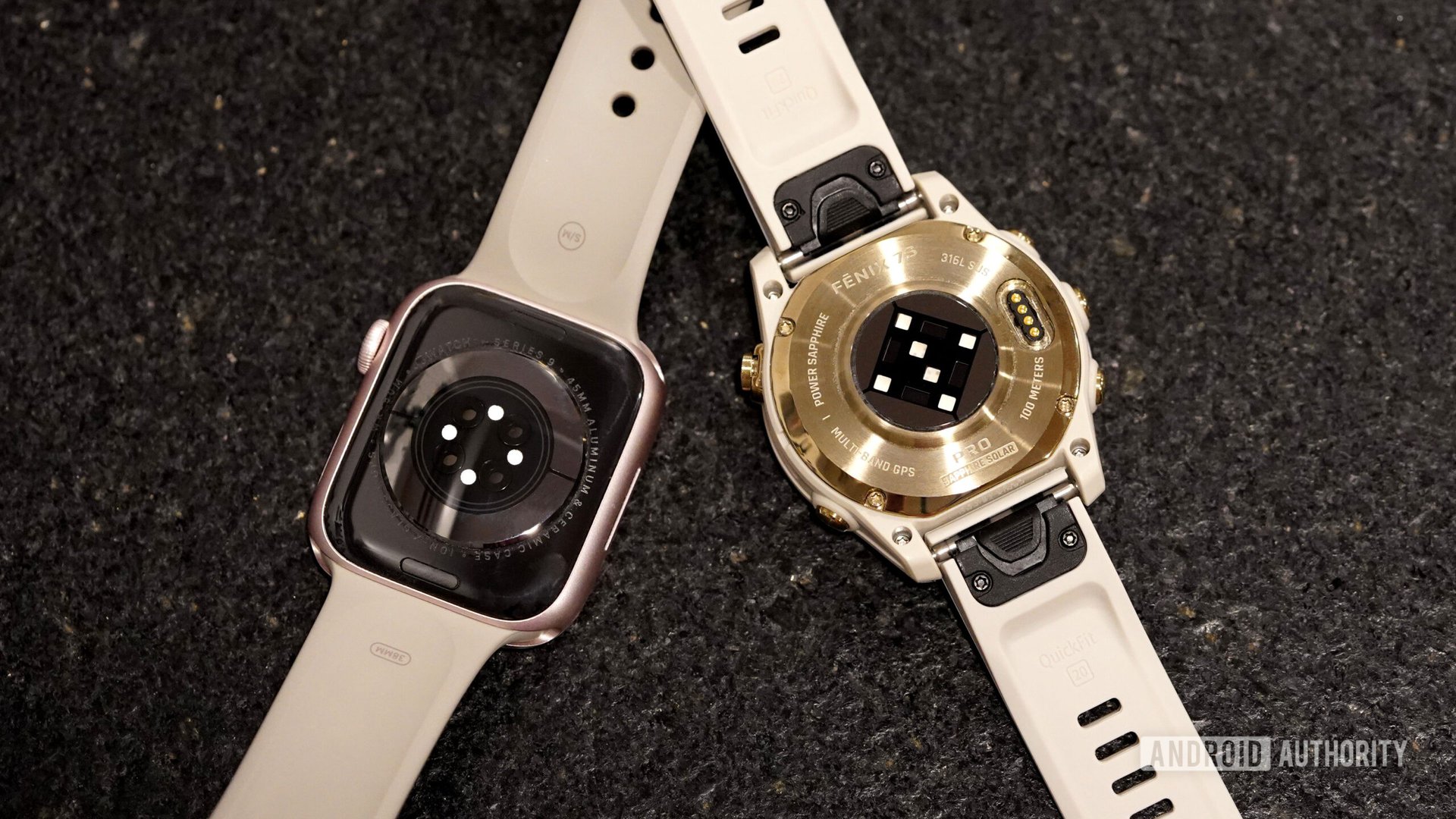
Kaitlyn Cimino / Android Authority
For many active users, an effective fitness tracker must check the following boxes: built-in GPS, versatile activity modes, and accurate heart rate tracking. Both Apple and Garmin continuously develop these facets of their platforms. Each offers more niche sports yearly, including group sports and unconventional workout types. Each boasts some of the top GPS accuracy in the game, catering to off-road adventuring and trailblazing. Finally, each tracks users’ heart rates with precision thanks to reliable optical heart rate sensors.
Starting with GPS, we’ve regularly tested wearables from both brands on runs, walks, hikes, bike rides, and even swims on Android Authority. Apple’s lineup includes the flagship Apple Watch Series 9, the budget-friendly Apple Watch SE, and the durable Apple Watch Ultra and Ultra 2. Garmin, which started with a GPS focus, offers a more complex portfolio with various watch lines. Devices range from the Venu smartwatch family to the runner-focused Forerunner series and feature-packed multisport options like the Fenix 7 Pro.
Throughout our testing, Apple’s devices have consistently tracked solid GPS data nearly identical to Garmin’s devices. The maps above show just two recent examples of closely laid tracks by an Apple Watch and a Fenix device. We saw similar results when testing the Garmin Venu 3 and Forerunner 265 as well. Garmin may still edge out Apple in specific scenarios like backcountry exploration, but it’s clear the Apple line is plenty reliable for the average athlete.
Both Garmin and Apple offer reliable GPS and heart rate data, two staples of accurate fitness tracking.
The same can be said for heart rate tracking by both Garmin’s and Apple’s latest wearables. My Apple Watch Series 9 records highly accurate heart rate data compared to my Polar H10 chest strap and even records useful data during tricky workouts like HIIT intervals, weight training, and tennis.
Likewise, Garmin’s latest ELEVATE Gen 5 optical heart rate monitor represents another step in the company’s commitment to detailed tracking. The powerful new sensor can be found on several high-end watches like the Fenix 7 Pro and Epix Pro, as well as the Garmin Venu 3 smartwatch. Like the newest Apple Watches, all Garmin watches with the brand’s newest sensor keep up closely with the accuracy provided by a heart rate chest strap.
Fitness-specific features for active users, but not just that

Kaitlyn Cimino / Android Authority
Sensors and sport modes aren’t the only areas where I see Apple catching up to Garmin. Each generation adds more tools for active users: heart rate zones during workouts, added metrics for runners and cyclists, more details in overnight tracking so users can rest up between workouts, and more. Apple Watches aren’t just urging users to close their rings nowadays; they’re also guiding athletes through training sessions and collecting key performance data.
Each generation of Apple Watch adds more tools and sensors to users’ wrists, while software updates add even more analysis and fitness tracking features.
The most recent watchOS 10 update adds even more features. Users can now build custom workouts on-device and find much more autonomy within the Fitness Plus platform. There are new features that cyclists have been clamoring for, such as speed sensor, cadence sensor, and power meter support into the Workouts app, and cycling power estimates. Apple should soon introduce some extra AI features to help users better understand and act on all of this tracked health and activity data.
All of these improvements amount to a device line that is increasingly easy to recommend and not just to smartwatch shoppers. When a highly active relative asked for guidance recently, my initial instinct was to suggest the Garmin Fenix 7 Pro — an incredible fitness tracker with almost more features than anyone could ever need.
And yet, the family member is an iOS user with an affinity for Apple products. In his prime, he was a collegiate track star (no blood relation, very different gene pool), and nowadays, he fits runs in at the break of dawn, hours before his kids wake up. The whole family scrambles to school, Starbucks, work, and an endless calendar of activities, including chorus concerts, sports games, birthday parties, and, for Dad, local races.
In other words, this man has no space in his day (or on his wrist) for a single-use device. The more I thought about it, the more I realized that an the Apple Watch Ultra would fit him better. It offers additional tools like apps, messaging, FaceTime, and phone call support without sacrificing much in the way of fitness tracking. It boasts plenty of runner-specific metrics for when he wants to nerd out over stride length or vertical oscillation, but also offers the simplicity of move goals for busy weeks when the bare minimum needs to be commended as well.
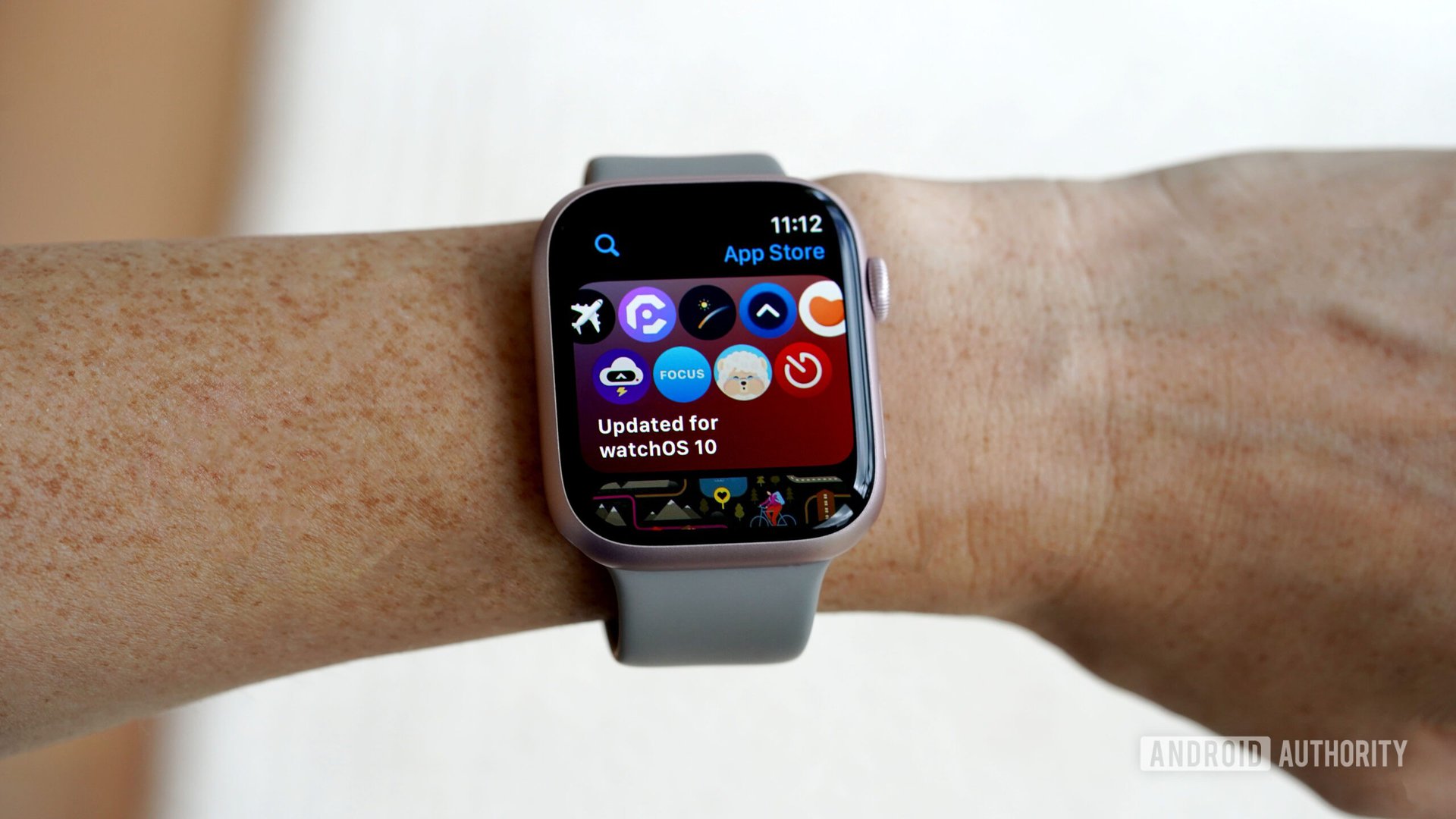
Kaitlyn Cimino / Android Authority
Meanwhile, anything the watch doesn’t offer natively can be found in the App Store. From Strava to All Trails to MyFitnessPal and thousands more, there is a seemingly endless number of apps available for supplementing the native tracking tools so he can adapt the watch to his needs and activities.
For a ski trip two years ago, I downloaded Slopes and collected more run data than I had any intention of ever looking at. During COVID-19, I added yoga and jump roping apps to stay fit in my limited indoor space. Apple even supports popular fitness platforms like Peloton for syncing your wearable to equipment.
Apple Watches also offer unmatched third-party app support so each user can handpick additional fitness tracking tools and resources.
The beauty of the Apple Watch ecosystem is that it allows users to tailor their experience with third-party tools. Couple that with reliable hardware and a powerful OS, and it’s a great starting point that users can trick out according to their own interests.
Garmin focuses on athletes
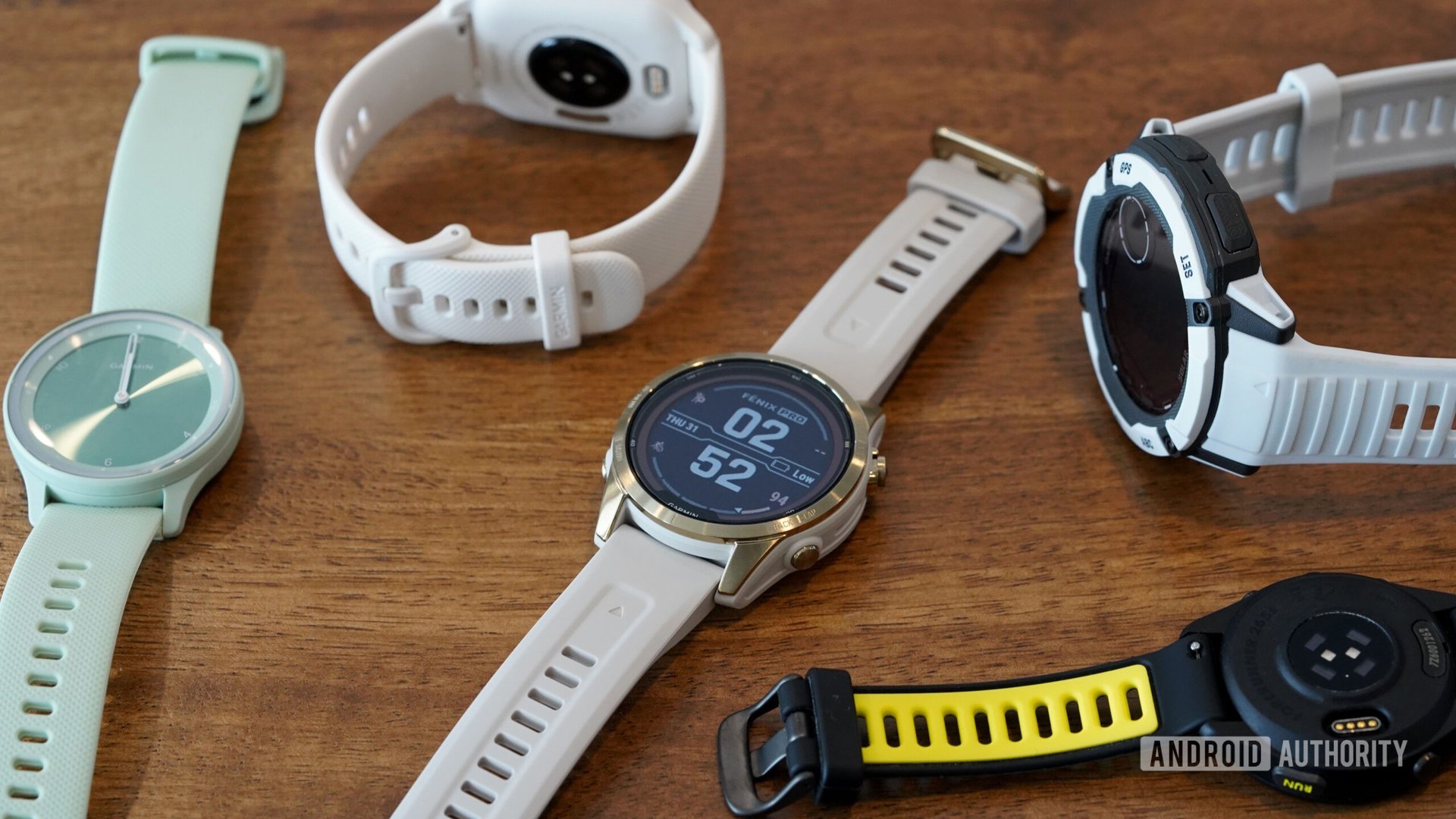
Kaitlyn Cimino / Android Authority
So where does that leave Garmin? Pretty much exactly where it’s always been: fully committed to athletes and adventurers. Despite all the strides Apple and other brands have made, Garmin remains the top choice for the truly elite active. Shoppers who want the best fitness tracking toolkit available and aren’t caught up on smart features will never go wrong with a Garmin wearable. Plus, they’re not just for iOS users.
To start, Apple isn’t quite there yet for serious athletes. Its training and recovery tools are still far from insightful Garmin tools like Training Readiness and Body Battery. Garmin devices are designed with proper athletes in mind, focusing on factors like multi-day battery life, solar charging, compatibility with power meters, and detailed mapping and navigation. They support users with free tools like Garmin Coach and with actionable metrics like sleep scores, real-time stamina, recovery time, and tons more.
Garmin’s watches boast multi-day battery life, detailed data tracking, and advanced training tools.
Garmin also offers a lot more variety than Apple’s warehouse. As mentioned, the company has a dedicated line for runners with options for all budgets. It boasts the Venu smartwatch lineup with staple smart features for more use outside the gym. It also offers the Epix, Fenix, and Instinct multisport lines, all of which pack a mind-boggling range of tools for outdoorsy users.
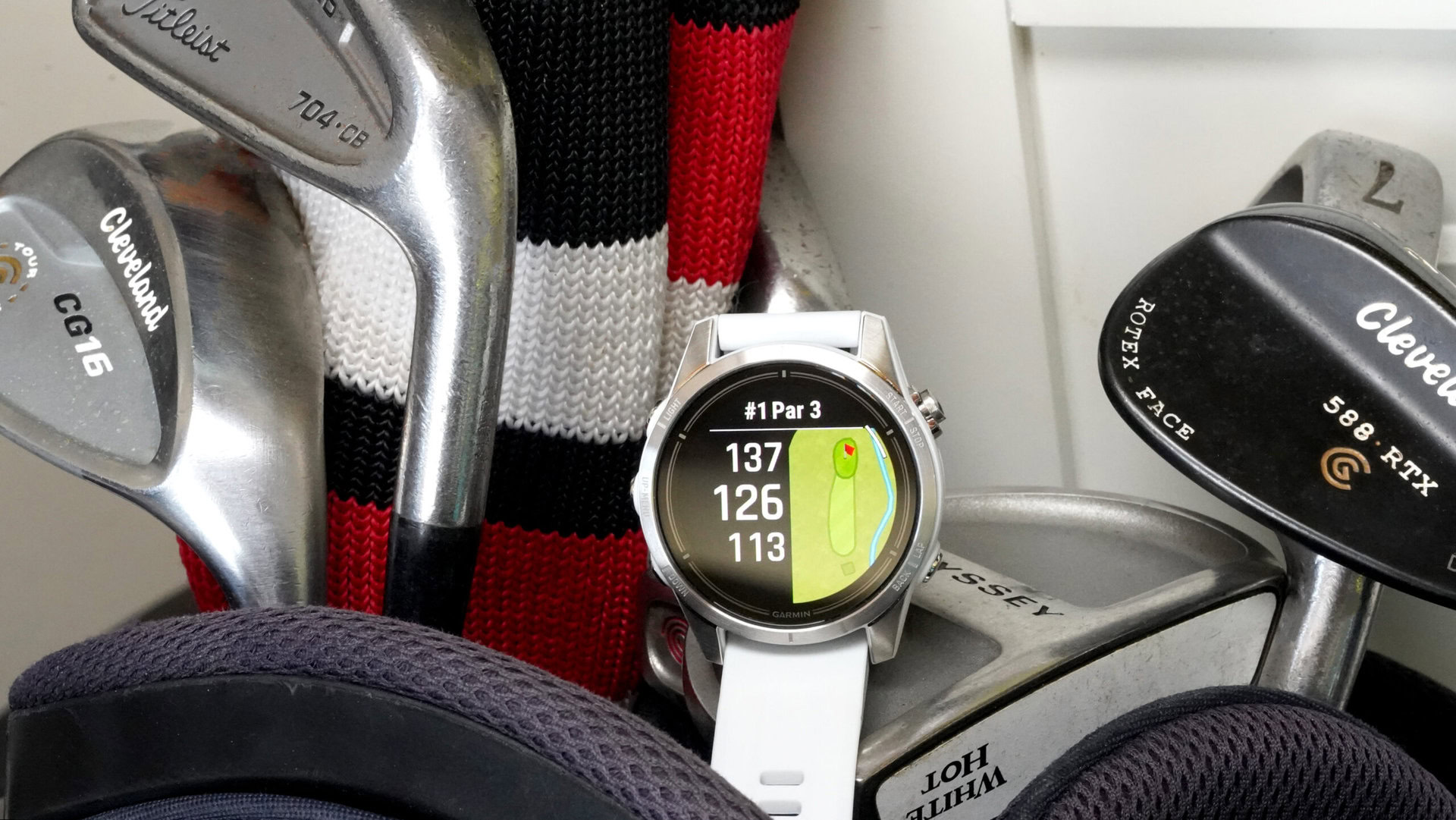
Kaitlyn Cimino / Android Authority
Another family member also pinged me for wearable advice. A professional athlete, he is obsessed with any and all data that could give him an edge in training. Automatic data combing and correlation are invaluable, as are takeaways like Morning Report and Health Snapshot.
This individual also never sits still. He’s as likely to be found spearfishing or snowboarding as cliff diving or climbing a volcano. For him, a “lazy” day means golfing 18 holes or getting lost on some back trail. Unlike my other shopper, he has little interest in fiddling with apps, firing off texts from his wrist, or paying for a cup of coffee with his watch. In other words, he’s not looking for an extension of his phone. Travel is also part of the gig in his line of work, and not having to pack a charger is a real advantage.
He is, in my opinion, the perfect candidate for a Garmin Fenix 7 Pro.
So, who should and shouldn’t choose an Apple Watch?
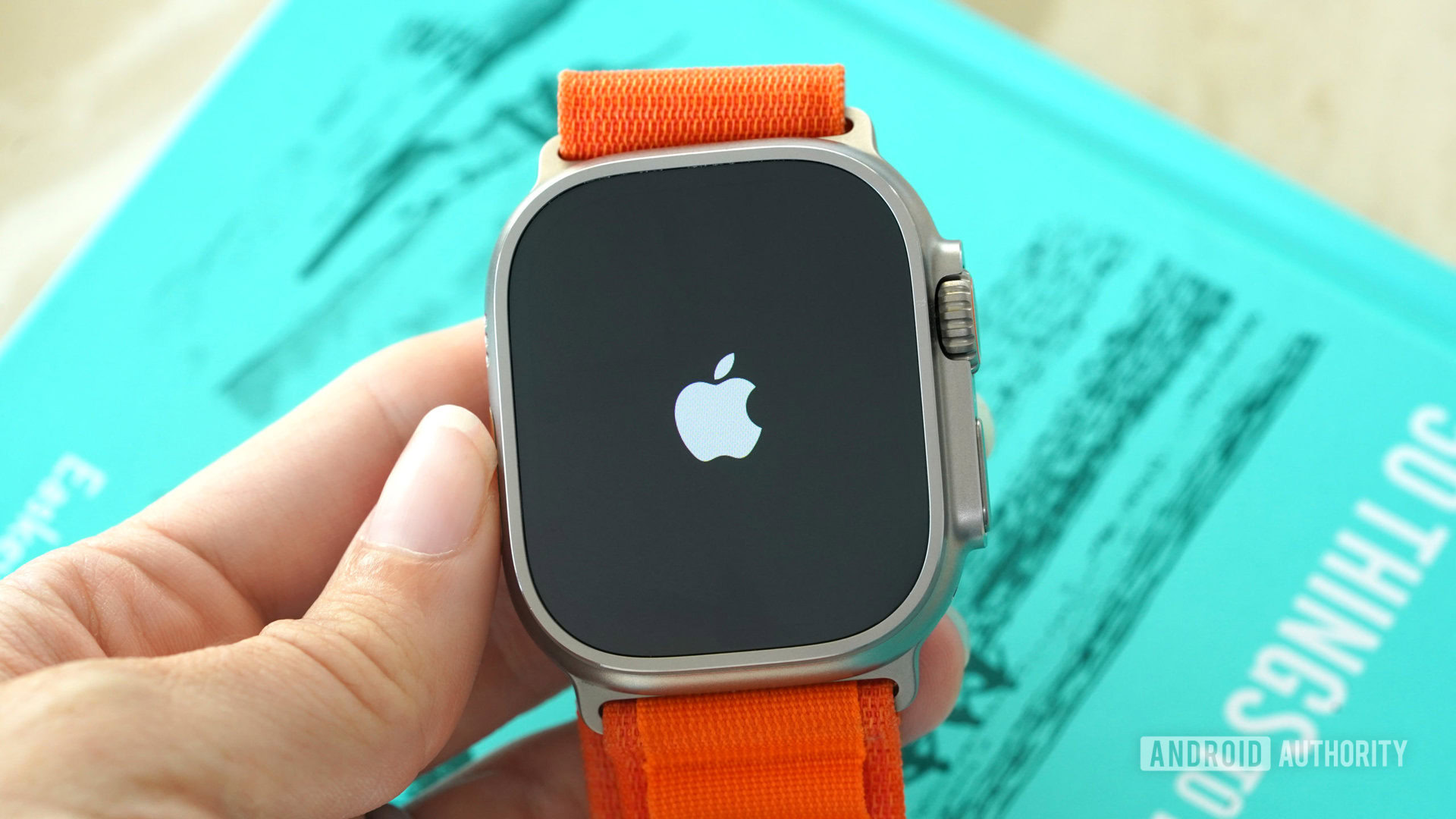
Kaitlyn Cimino / Android Authority
To start, any iOS user who wants the best smartwatch experience available should start and stop shopping within the Apple Watch line. The Apple Watch Series 9 or Ultra 2 are hands down the best iPhone companions, with seamless integration and unmatched third-party app support. Either Apple Watch is also a perfectly adequate device for most athletes.
With that said, the line between active and highly active is far from black and white. Contrary to everything I personally feel about running, signing up for 10Ks and marathons is more popular than ever. Depending on your approach to fitness and your interest in data, a Garmin device may be a better fit. The company nails training and recovery guidance and knocks battery life out of the park.

